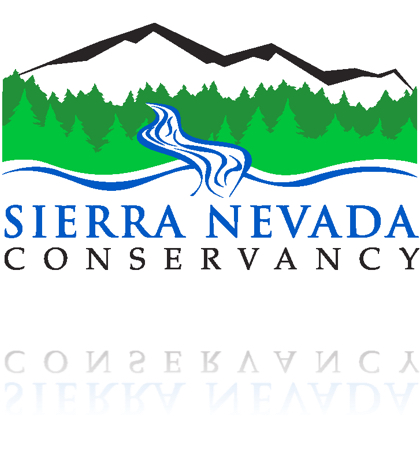Thanks to funding from Proposition 1, the Water Quality, Supply, and infrastructure Improvement Act of 2014, the Sierra Nevada Conservancy (SNC) Governing Board has awarded $3.2 million in grants for project that will address watershed restoration, forest health, tree mortality and reducing wildfire risk. The $3.2 million grants are the third set of awards the SNC has made under the Proposition 1 grant program.
The counties with projects approved for funding include:
Plumas County – Wolf and Grizzly Creek Municipal Watershed Protection Project, $465,500
This grant to the Plumas County Fire Safe Council will support a joint project of the Plumas County Fire Safe Council and the Plumas National Forest that will complete forest thinning treatments on 498 acres adjacent to two important water reservoirs, Lake Davis and Round Valley Reservoir, in Plumas County. The project is designed to reduce fire hazard and restore forest and watershed health within two watersheds identified as “Priority Watersheds” that serve the communities of Greenville and Portola.
Placer County – American River Headwaters Improvement Project, $500,000
This grant to the American River Conservancy will treat 330 acres on lands the American River Conservancy owns at the headwaters of the Middle Fork of the American River. Located upstream of the French Meadows and Hell Hole Reservoirs and west of Lake Tahoe and the Granite Chief Wilderness, the entire site includes 10,115 acres and will, in part, serve as a research and demonstrate site for landscape-scale ecologically-based forest management.
Sierra County – Sierra Buttes / Gold Lakes Basin Properties Nonindustrial Timber Management Plan, $74,750
This grant to the Sierra County Land Trust will complete a Nonindustrial Timber Management Plan (NTMP), which will guide management practices on 1,525 acres of forested property owned by the Sierra County Land Trust above Sierra City in Sierra County, and will serve as a functional equivalent to CEQA. Located at the headwaters of the North Fork of the Yuba River, the project area includes two lakes (Volcano Lake and Young America Lake), frontage on Lower and Upper Sardine Lakes, frontage on the North Fork of the Yuba River, and multiple smaller streams.
Modoc County – Lookout/Upper Pit Watershed Restoration Project, $500,000
This grant to the Pit Resource Conservation District will thin 900 acres of overstocked forest and remove understory brush. The project area is located in the Lookout / Upper Pit Watershed and feeds Taylor Creek, which flows into the Pit River. The project purpose is to expand restoration efforts in the area that will protect the local water supply and protect the community of Lookout from wildfire.
Lassen County – Diamond Mountain Watershed Restoration Project, $500,000
This grant awarded to the Lassen County Fire Safe Council will thin 900 acres of overstocked lands adjacent to the Lassen National Forest. This project is one portion of a larger landscape scale project, the Diamond Mountain Initiative, which seeks to restore watershed function and forest health approximately 6 miles south of Susanville in Lassen County.
Modoc County – Barry Point Fire Restoration Project, $375,888
This grant to the Modoc Resource Conservation District will rehabilitate 2,364 acres in northern Modoc County burned by the Barry Point Fire by planting more than 500,000 native ponderosa pine seedlings. The project area includes 10 streams that flow primarily northeast into Goose Lake, the headwaters of the Pit River.
Nevada County – Scotts Flat Reservoir Fuels Treatment Phase III, $250,700
This grant awarded to the Nevada Irrigation District (NID) will remove excess trees, brush, and sprouting hardwoods to reduce fire risk on 82 acres owned by the Nevada Irrigation District. The project area is located on the shoreline of the Scotts Flat Reservoir, an important component of the water supply infrastructure that NID manages for communities in Western Nevada County.
Calaveras County – South Fork Mokelumne River Watershed Restoration Project, $74,085
This grant awarded to Calaveras Healthy Forests Impact Product Solutions (CHIPS) will complete the analysis and surveys required to complete NEPA and CEQA for a future on-the-ground fuels treatment project. Prompted by the Butte Fire that burned more than 11,000 acres in the Mokelumne Community Forest, and overstocked conditions that include insect-killed trees, this project covers 912 acres of watershed on both sides of the South Fork Mokelumne River.
Mariposa County – Clarks Valley Wildfire Reduction Project, $419,359
This grant awarded to the Sierra Foothill Conservancy will treat 175 acres by removing conifers that have died as a result of drought and Bark Beetle infestation. Located near the community of Jerseydale in Mariposa County, the 175-acre project area was selected as a strategic zone within the Wildland Urban Interface that will serve as a buffer between private and public land, help protect the community of Jerseydale, improve water quality in Snow Creek and the Chowchilla River and Merced River watersheds, and help restore habitat for the endangered Great Grey Owl.
Tuolumne County – Long Gulch Watershed Enhancement Plan, $75,000
This grant to the Mother Lode Land Trust will complete a Watershed Enhancement Plan, including a Nonindustrial Timber Management Plan, on the 575-acre Long Gulch Ranch Preserve that is owned by the Mother Lode Land Trust and has experienced extensive tree mortality due to drought and Pine Bark Beetle infestations. The property is located near the community of Groveland in Tuolumne County, and the project area seasonally feeds water into Pine Mountain Lake, which supplies drinking water and recreational opportunities to the Pine Mountain Lake community.
Jim Branham, the SNC’s executive officer, shared with Capital Public Radio that projects in Calaveras, Mariposa and Tuolumne counties will deal with taking out tress that have died because of the drought or insect infestations.
“That means going in and removing, as appropriate, the trees that are dead,” Branham explains. “But also trying to continue to manage the forest to keep as much of the green forest healthy and resilient as possible.”
“Sadly it’s probably going to become a focus of more and more of our forest projects,” says Branham, “because the problem is extremely severe in the southern sierra but it continues to creep northerly. In three of the projects there was a heavy component of addressing the tree mortality problem.”
Branham also spoke about a Placer County restoration project at the headwaters of the Middle Fork of the American River.
“It protects the water supply of folks in Placer County but also would have an effect on folks who benefit from the American River,” says Branham. “So that’s one that I think is a high profile project that’s going to do some good work.”
 California Water News Daily Your Source For Water News in California
California Water News Daily Your Source For Water News in California


